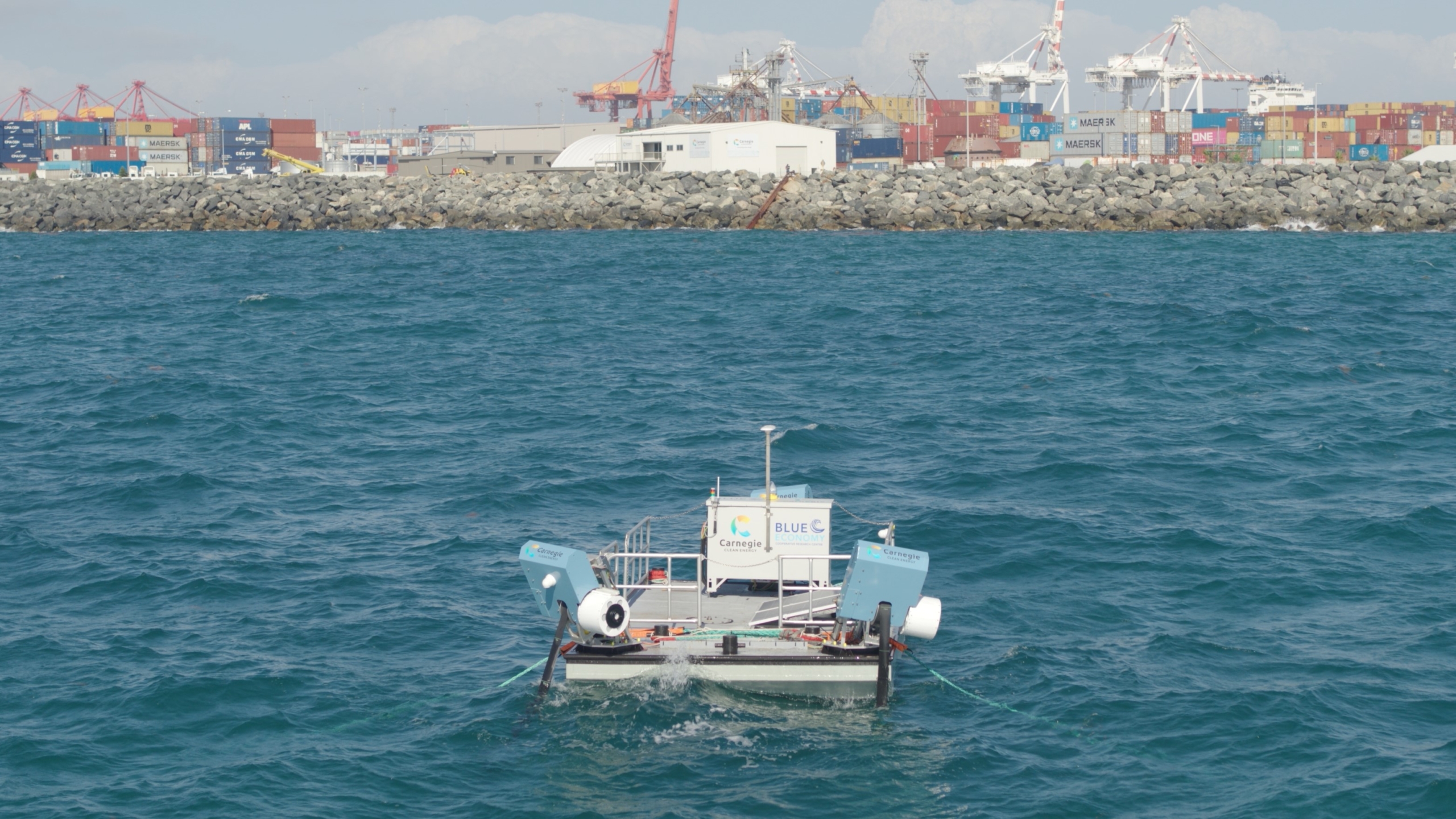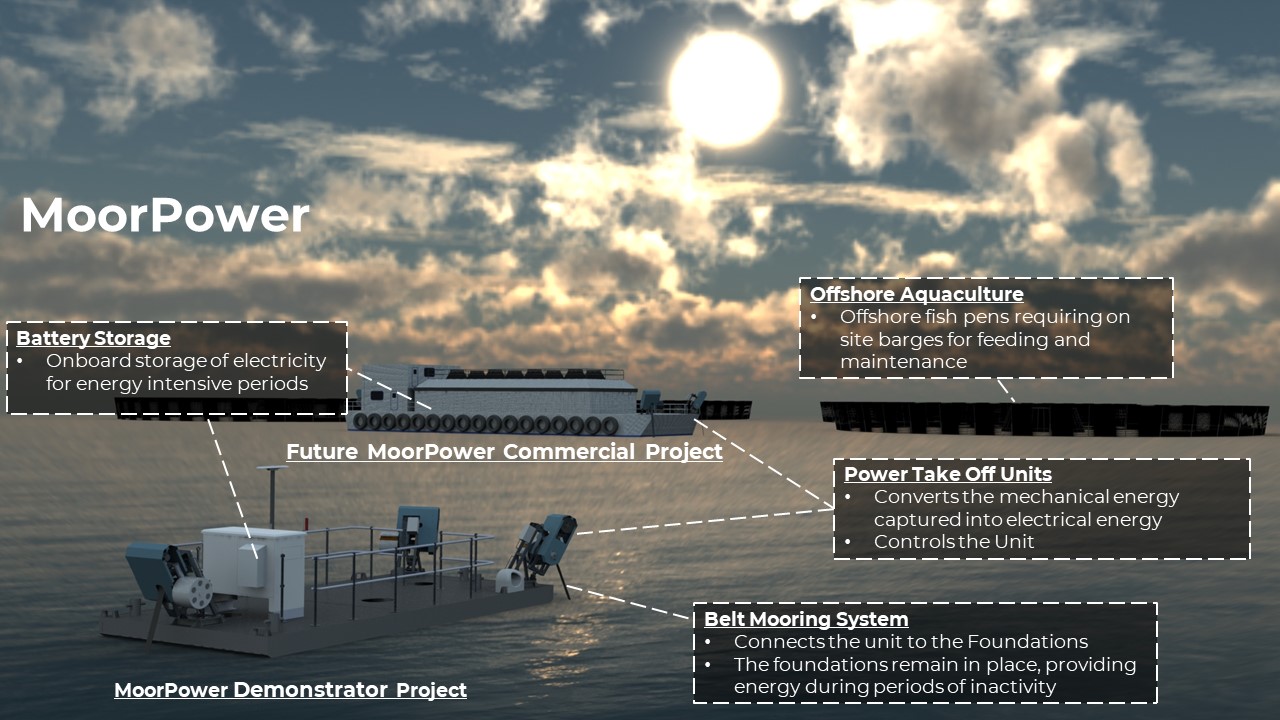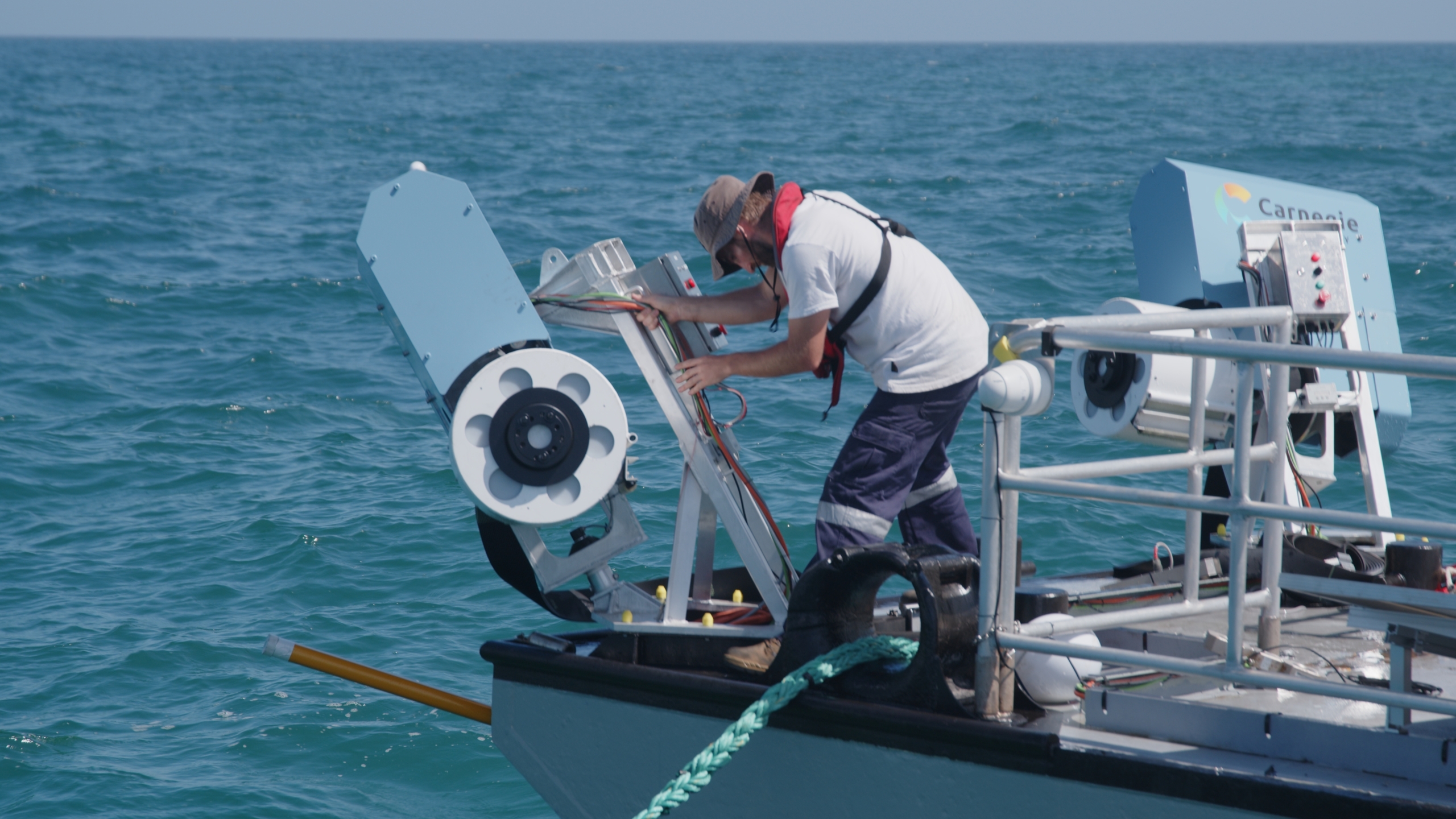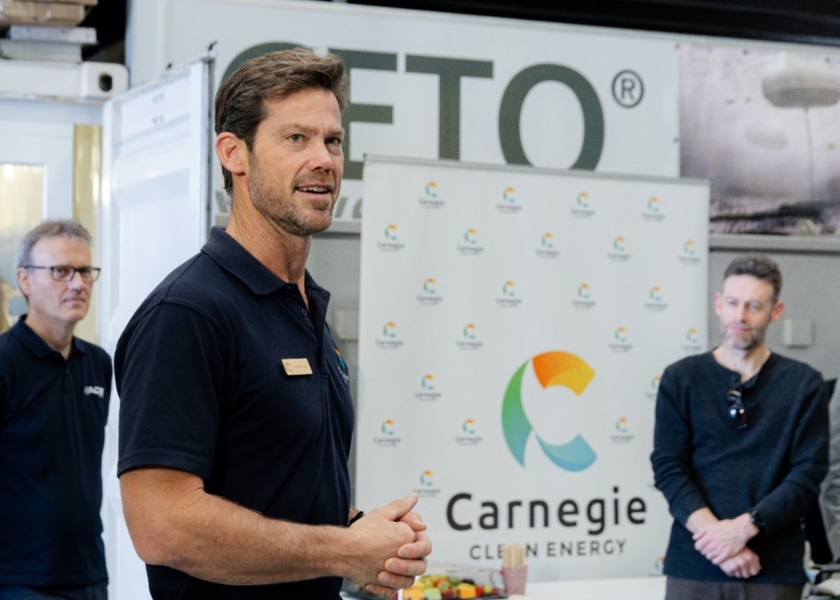Key Challenge
When onshore electricity is not available for offshore aquaculture operations, diesel or other fossil fuel generators are necessary. While diesel generators can provide a source of reliable power, reliance on diesel creates significant business and operational challenges, such as high emissions generation, diesel transport risks to the environment and human safety and high costs.
Solution
To reduce and/or eliminate the challenges, Carnegie Clean Energy developed the MoorPower to deliver at-sea onboard electricity generation from wave energy.
MoorPower is a spin-off from Carnegie’s CETO wave energy converter and has similar principles of operation including an adapted Power Take Off (PTO) system, which is the component that converts the motion into electricity.
MoorPower operates on the surface instead of underwater, which will be particularly well-suited for operating in remote offshore locations on structures floating on the ocean surface.
MoorPower can be deployed for any type of moored vessel and is not limited to fish farming. Carnegie continues to collaborate with key aquaculture companies and other offshore demand applications to understand their requirements, constraints and challenges.

Key Benefits of MoorPower Technology
About this Project
The Blue Economy Cooperative Research Centre (BE-CRC) provided $3.4m to implement the MoorPower Demonstrator Project (“Demonstrator”) – a full-life-cycle technology development project validating implementation and performance from concept to demonstration.
The Demonstrator project team includes a consortium of partners consisting of two of Australia’s largest aquaculture companies, Huon Aquaculture and Tassal Group. Academic and industry partners include DNV GL Australia, Advanced Composite Structures Australia, University of Tasmania, Climate KIC/Australian Ocean Energy Group, AMC Search and University of Queensland.

How MoorPower Works
The illustration below identifies the key components of Demonstrator barge. It includes three power take-off units individually connected to the seabed and generating electricity as well as the associated electrical system including battery storage.

Project Development Timeline
Current Status
The MoorPower demonstrator was successfully deployed in Western Australia in January 2024 following completion of the onshore testing. It is currently operating and collecting data that is being monitored and optimised by the Carnegie team.
Monitoring
The demonstrator incorporates real time data transfer, detailing critical information on wave height, wind conditions and energy generation amongst others. Operations are monitored remotely and at Carnegie’s facility, located 300m from the deployment site.

Image: Monitoring MoorPower operations and data collection
Carnegie’s facility has constant visuals on the deployment, allowing for additional critical monitoring. Real-time monitoring system supports efficient control strategies, enables performance optimisation and allows the team to promptly address any potential issues.

Image: Arial view of the Carnegie Clean Energy onshore facility in North Fremantle, Western Australia. MoorPower is deployed just offshore from this facility.
The Future of MoorPower
Jonathan Fievez, CEO, Carnegie

Image: Carnegie Clean Energy CEO Jonathan Fievez presenting the MoorPower project to Blue Economy CRC Participants Workshop Delegates in May 2023.
“The elegance of the MoorPower aquaculture application for Carnegie is that these barges constantly move with the waves already and we have the electricity customer and an existing prime mover (the infrastructure being moved by the waves) in one pre-existing package. We are essentially optimising our CETO power take-off and controller to suit the application and provide a competitive offering. Wave energy has the benefits of consistency and predictability, and in some places, wave may be the only renewable energy that is practical. With the MoorPower demonstrator now deployed and operating as intended, we are excited to begin working with our end-user partners on future commercial projects”
Additional aquaculture technology providers and industry are also supportive of the MoorPower project as it focuses on the critical decarbonisation of offshore operations. Maintaining social licence for offshore operations has become a focal point of the aquaculture industry in recent years, with operations moving further offshore. Access to necessary energy for operations has become increasingly challenging and current use of diesel adds risk and costs to the list of challenges associated with this offshore change. MoorPower offers a solution to one of these significant challenges – energy supply – by providing clean, predictable, reliable energy from ocean waves while aquaculture barges are moored.




